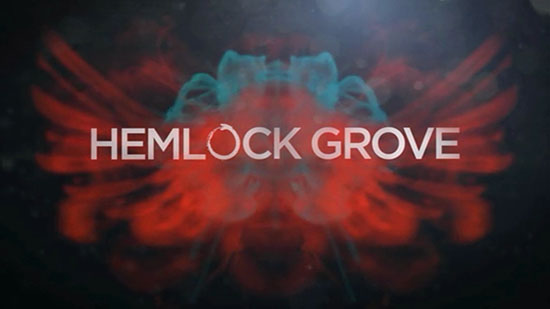
I don’t know why I watched all of Hemlock Grove’s first season. Maybe I had a quiet weekend. Maybe I just wanted to have an opinion. Maybe I’m a masochist. Maybe I’m just a kind soul who wanted to give the show a chance. Whatever the reason, I watched it all, and lo, it was bad. The Eli Roth-produced show was the first black mark on Netflix’s reputation for quality original content. Against my better judgement, I bought the novel to see if the source material was any better. Lo, it was not.
Ever since the Qwikster debacle of ’11, Netflix has been pretty adamant about assuaging customers’ concerns. It appears that this adamancy extends to their original content as well: after the poor critical reception of Hemlock Grove’s first season, a new showrunner and a new writing team showed up to improve the show. Someone at Netflix is listening, and not just to the numbers. Bravo.
With the promise of fresh blood and a trailer that showed some fairly cool imagery, I was actually kind of anxious to see how this new season would turn out.
Lo, it is bad.
Granted, it’s not as bad as the first season, but it still suffers from many of the same problems. Here’s what has improved:
Famke Janssen’s accent is gone. It’s been written out; killed off between seasons like a bad sitcom character. There’s a throwaway line of exposition that explains it in the first episode of the new season, but Janssen’s performance is so much better without it that logic and continuity can take a fucking hike.
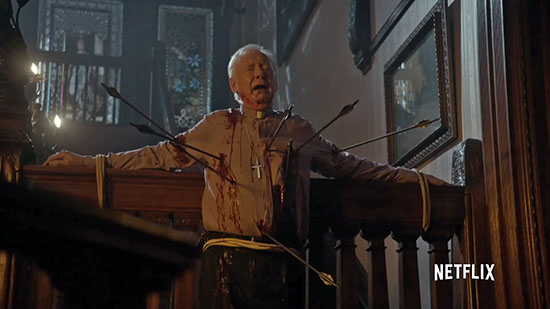
Another performance that has improved is Landon Liboiron’s. As the show’s true lead, he needed to step up, and I think he has. I wouldn’t say he carries the show, but he’s doing the moody young werewolf thing better than a Twilight character. His American accent is great, too, which is something that some of this show’s main cast can’t seem to crack (I’m looking at you Dougray Scott and Bill Skarsgård).
If you’re a moron like me and you watched every minute of season one, you may remember the X-Files style tease at the end of the finale, in which the big bad is revealed to be not so dead. Luckily, the new writers knew the tease was dumb, so the whole thing is nullified with swift purpose. The new big bad isn’t a whole lot better, but again, it’s still an improvement.
Some new peripheral characters liven up the show, especially J.C. Mackenzie as Dr. Spivak. Introduced in the fifth episode, his performance is one to be savored. His line deliveries are warm, funny, and natural. The arrival of Dr. Spivak marks a significant development in Hemlock Grove: he represents the bright idea to find the humor in the show. There’s some real levity and quippy dialogue injected into his scenes, which is unbelievably refreshing because the show’s drama has never really worked. There are a moments of real fun in season two, but they don’t serve the narrative, and they’re very unevenly distributed throughout the season.
Another new face on the show is Madeleine Brewer, who you might recognize from Orange is the New Black. Brewer plays Miranda, the show’s new romantic interest. While her character’s entry into the plot is remarkably contrived, her screen presence is welcome. Her character is thinly written, and in true Supernatural Teen Romance fashion, she’s screwing the werewolf AND the vampire. Oh, and she’s lactating all the time. That’s what women are for, right? Monster-fuckin’ and baby-feedin’. Oh, well. At least there’s an intelligent female scientist character on the show regularly.
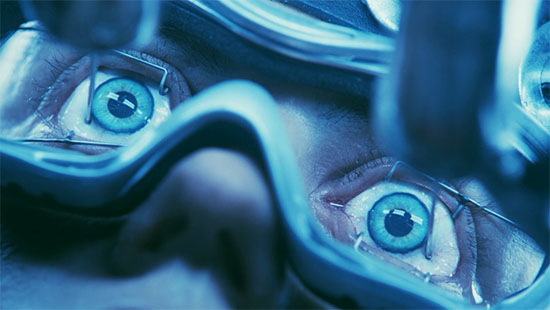
So there’s the good, but the show still suffers from many of problems that plagued the first season. Where do I begin?
I suppose I can start with the show’s visuals. It’s an astoundingly ugly show: nearly every scene looks like it’s shot through milk and overlit with piss-colored gels. Denis Villeneuve’s Enemy used a similar jaundiced color palette to great effect, and Guillermo del Toro knows how to light with yellow, but good god, this show looks hideous.
Also contributing to the show’s visual hideousness is some really bad CGI. Great CGI on a TV budget is damn near impossible, but every establishing shot of Godfrey tower looks terribly phony, and almost every shot of a full CG werewolf in motion elicits an “oh, no.” The season finale features a full CG creature that is a disaster of laughable proportions, making for one of the worst season finale cliffhangers I’ve seen in years. It’s not just the CG creatures and environments that suffer, it’s the small stuff, too. Take a look:
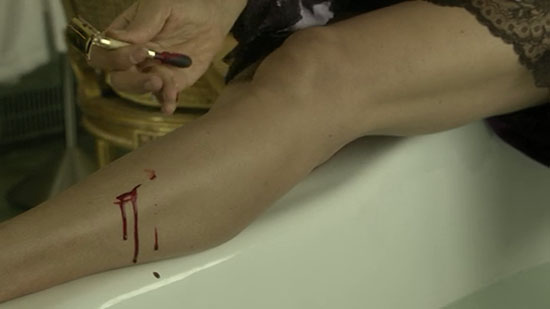
The gag pictured above involves a prop safety razor with a blood-filled bulb, to be squeezed by the actor (Famke Janssen). They’re cool little props, but they’re useless if you REVEAL THE TRICK ON CAMERA. Is it the actor’s fault for revealing the prop? Is it the post-production team’s fault for not spotting it? Is it the fault of the person who saw it and said “Ah, fuck it. Who cares?” It would have been a simple CGI fix.
Sidenote: The driving scenes really suffer as well, since all the moving car interiors are shot against green screen. The lighting sucks, the compositing is fuzzy, characters only drive in straight lines, and they move the steering wheel too damn much. Give me rear projection any day.
While the structure of individual episodes has improved, the long arcs still don’t feel very propulsive. The show doesn’t do bottle episodes, so there isn’t anything interesting on that front, either. Most weekly horror or sci-fi shows have the benefit of doing monster-of-the-week episodes, but Netflix’s binge-watching model isn’t terribly conducive to monsters of the week. The season’s big bads aren’t frightening or interesting, and they have nothing interesting to offer from a standpoint of character. The season’s romance, while providing the occasional laugh, feels like the Twilight slashfic threesome that Manic Panic fangirls wrote about on their blogs.
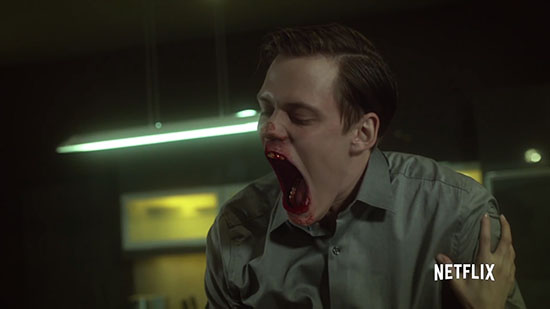
Speaking of monsters, the show’s vampirism (upirism?) has lost the mystery it had in the first season, and has now become incredibly banal. There are countless scenes of Roman staring at people’s necks, the throb of their hearts filling our ears. There’s no tension there, since he gives in to this desire early in the season, but the show is content to keep showing us this tropey stock bloodlust scene over and over. I get it already.
As a setting, Hemlock Grove always feels like an odd mashup of stock footage establishing shots, CGI, and sound stages. The town has no real character, in stark contrast to something like Twin Peaks, which was such a clearly defined place. Peter and his mother were right to leave Hemlock Grove at the end of the first season, but his mother (a mostly absent Lili Taylor) is nabbed by the fuzz almost immediately after the first episode begins. She is extradited back to Pennsylvania to be put on trial, so (of course) Peter has to come back to Faketown, USA. Hemlock Grove has the potential to be a compelling setting for a series, but town is whatever the show needs it to be, i.e., a hollow backdrop.
The sheer amount of contrivance and coincidence used to push the plot forward is pretty ludicrous. Characters are suddenly bestowed with the magical/biological abilities they need to move forward. Like the last season, the primary motivating force to solve the mystery is premonition, which means our characters are still too inept to solve things using their noggins. They’re empty-headed supernatural pretty boys. The show still doesn’t place good characters in dramatic situations. Any drama the show tries to build is drained away when intercut with laughably stupid moments. These moments would be campy and fun if the show understood camp, but it doesn’t. The whole show exists in this nebulous gray zone where the drama isn’t dramatic, the horror isn’t scary, the comedy is only mildly funny, and the characters are cyphers, not just in our world, but in their own.
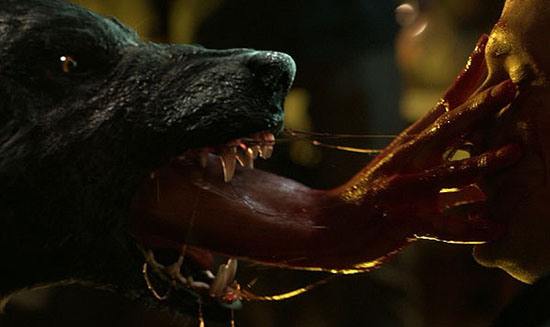
Netflix hasn’t announced if Hemlock Grove will get a third season, but they’ve managed to fool me twice. Shame on me. They won’t be fooling me again. I am, however, eager to devour another season of Orange is the New Black.